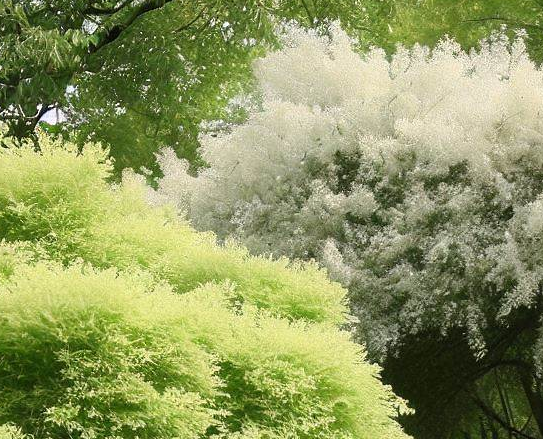The fringe tree is a deciduous decorative tree with spring flowers that is still far from the level of popularity enjoyed by more widespread species such as dogwoods, magnolias, and blooming cherries. The fragrant, light, hanging clusters of white petals that resemble fringe give rise to the name “fringe tree.” The Chinese and American varieties of this tree produce flower clusters that look like tufts of fleece and cover every part of the tree in a stunning display. These plants are dioecious, meaning that they have separate male and female species. Males are more appealing visually while females are not that striking but the fruits formed by females are a good source of food for the wildlife and birds.
Chinese Fringe Tree vs American Fringe Tree Pros and Cons
Chinese fringe trees are easily identified by their springtime profusion of fragrant white blossoms. It thrives in lawns and low-water settings and is beautiful year-round with its yellow fall color, spring blossoms, and exfoliating bark. The female trees of Chinese fringe trees can produce tiny blueberries that draw birds if other trees are planted nearby.
American Fringe Tree, on the other hand, is a lovely specimen plant for lawns and is also a useful flowering tree for native gardens. It features lovely flowers, fruits, and foliage. The flowers of this tree, in particular, stand out for their unique appearance. This fringe tree, with its ethereal spring bloom, is one of the most gorgeous tiny flowering trees in North America. The spectacular flower of this fringe tree attracts many tourists to its native habitats near streams and small rivers, as well as in dry areas at higher altitudes.
Cons
The American Fringe Tree is susceptible to scale and borers, especially when grown in arid locations. Sometimes Emerald Ash Borers attack it.
The Chinese fringe tree, however, is frequently harmed by deer. It does not have any significant pest or disease issues. Powdery mildew, canker, and leaf spot occur occasionally. The problems caused by scale, mites, and borer insects are rather insignificant.
Chinese fringe tree vs American fringe tree Growth Rate
Native to the eastern United States, the American fringe tree thrives from Canada to the Gulf Coast and reaches heights of twelve to twenty feet tall and wide. The majority resemble huge shrubs. It is one of the trees that tend to be one of the last to leaf out in the spring, and in the fall, the oblong leaves turn a delicate, transparent yellow color. Native to North America, the White Fringetree thrives on moist, acidic soil but is adaptable enough to grow in even wet soils. It is mostly found in highland woods and along stream banks over the majority of the South. It typically grows 6 to 10 inches each year, but with sufficient fertilizer and rich, moist soil, it can grow up to a foot every year.
The Chinese fringe tree, on the other hand, is the bigger of these two fringe trees, reaching fifteen to twenty-five feet tall and broad, and is a new single-stem form that is being introduced to the Garden’s collection. It also grows slowly.
Chinese fringe tree vs American fringe tree Care
A Chinese fringe tree, which is sometimes planted as a multi-stemmed big shrub, can grow into a small tree with a height of 10 to 20 feet. It can attain heights between 30 and 40 feet under optimal conditions. It is recommended to plant this native to Asia in a position that receives full sunlight or partial shade. The shiny, leathery leaves look best in some light shadow (dappled sunlight), while full sun yields the most attractive flowers. There is a pattern of better flowering in alternate years for this tree.
The American Fringetree, on the other hand, is dioecious, meaning that it only produces either male or female blooms, never both, on the same plant. Male flowers are characterized by their two short stamens, whilst female flowers are distinguished by their little superior ovary, which only has one style. The flowering period lasts for roughly two weeks in late spring. This plant prefers deep loam to thin rocky soil, moist to dry-mesic conditions, and full sun to moderate shade. This woody shrub can adapt to conditions that are at least five zones north of its native range. The ideal places to cultivate it are generally those that have some protection from the wind.



